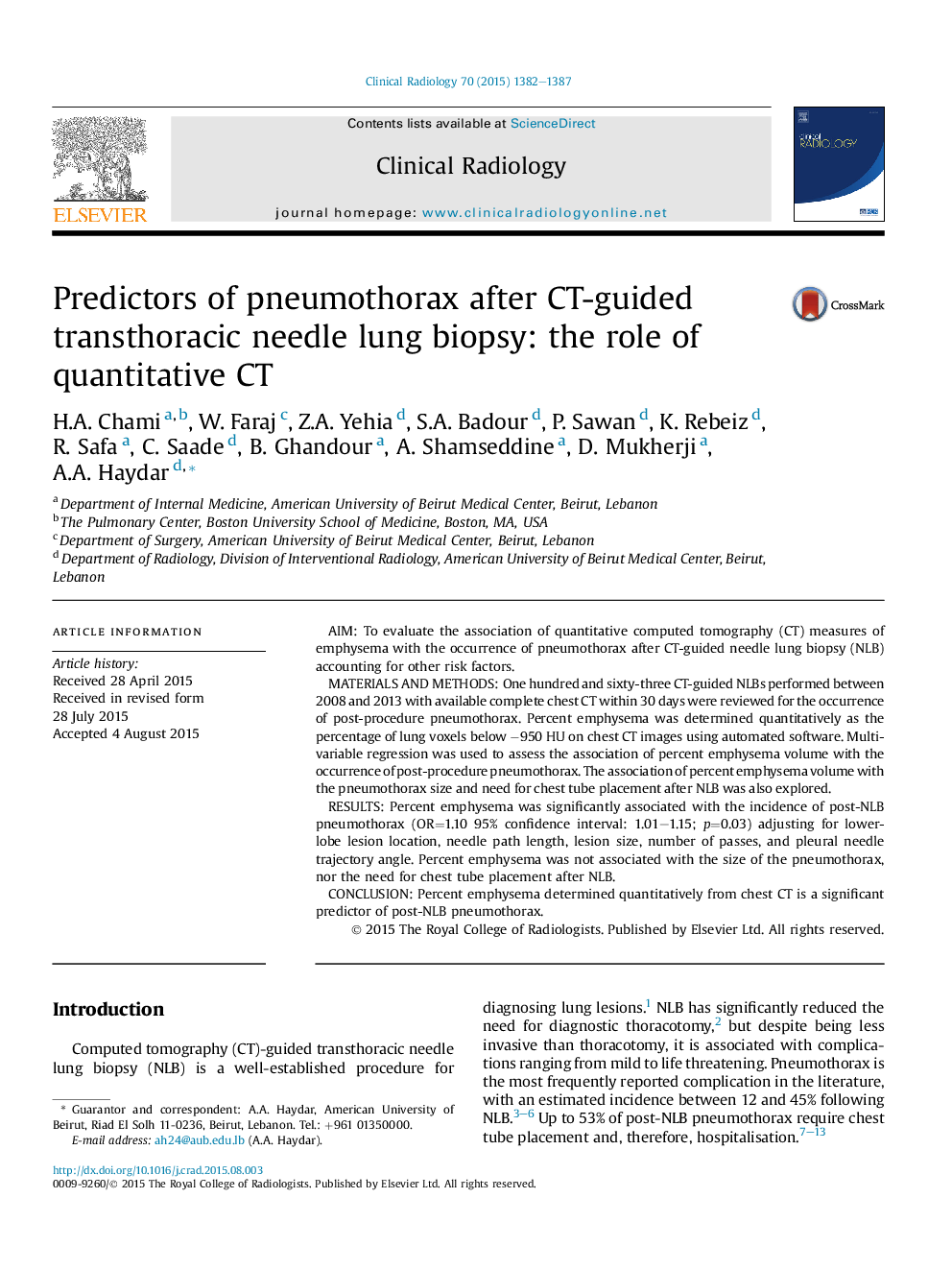| Article ID | Journal | Published Year | Pages | File Type |
|---|---|---|---|---|
| 3981356 | Clinical Radiology | 2015 | 6 Pages |
•Examine the association between quantitative emphysema measures & post NLB pneumothorax.•The risk of post-NLB pneumothorax increases with every unit increase in percent emphysema.•Percent emphysema is a significant predictor of pneumothorax post transthoracic NLB.•Quantitative analysis of chest CT offers clinicians' objective measures to assess pneumothorax risk.
AimTo evaluate the association of quantitative computed tomography (CT) measures of emphysema with the occurrence of pneumothorax after CT-guided needle lung biopsy (NLB) accounting for other risk factors.Materials and methodsOne hundred and sixty-three CT-guided NLBs performed between 2008 and 2013 with available complete chest CT within 30 days were reviewed for the occurrence of post-procedure pneumothorax. Percent emphysema was determined quantitatively as the percentage of lung voxels below −950 HU on chest CT images using automated software. Multivariable regression was used to assess the association of percent emphysema volume with the occurrence of post-procedure pneumothorax. The association of percent emphysema volume with the pneumothorax size and need for chest tube placement after NLB was also explored.ResultsPercent emphysema was significantly associated with the incidence of post-NLB pneumothorax (OR=1.10 95% confidence interval: 1.01–1.15; p=0.03) adjusting for lower-lobe lesion location, needle path length, lesion size, number of passes, and pleural needle trajectory angle. Percent emphysema was not associated with the size of the pneumothorax, nor the need for chest tube placement after NLB.ConclusionPercent emphysema determined quantitatively from chest CT is a significant predictor of post-NLB pneumothorax.
